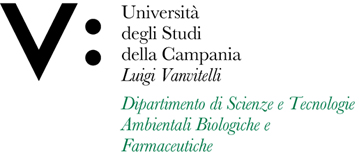Cataldo GODANO
Insegnamento di FISICA TERRESTRE
Corso di laurea in SCIENZE AMBIENTALI
SSD: GEO/10
CFU: 6,00
ORE PER UNITÀ DIDATTICA: 48,00
Periodo di Erogazione: Primo Semestre
Italiano
| Lingua di insegnamento | ITALIANO |
| Contenuti | Il corso tratterà della struttura interna della Terra e dei principali metodi di indagine per conoscerla. Tratterà inoltre del funzionamento dei campi magnetico e gravitazionale, del comportamento reologico delle rocce con particolare attenzione al mantello e dei processi fluidodinamici utili a modellizzare il comportamento dei vulcani. |
| Testi di riferimento | Fowler C. M. R., 2004. The Solid Earth: An Introduction to Global Geophysics, Cambridge University Press. |
| Obiettivi formativi | Gli studenti dovranno dimostrare di conoscere e di aver appreso tutti gli argomenti descritti nel programma e di essere in grado di esporli con chiarezza in sede di esame con particolare attenzione alla comprensione dei processi fisici sottostanti al fenomeno. |
| Prerequisiti | Gli studenti dovranno possedere delle conoscenze di Fisica di base (forze, campo, onde) ed essere in grado di comprendere senza dettagli matematici una dimostrazione. Le propedeuticità sono Meccanica, Termodinamica, Elettromagnetismo e ottica. |
| Metodologie didattiche | La didattica si baserà essenzialmente su lezione frontali. Non sono previste attività di laboratorio né esercitazioni. |
| Metodi di valutazione | Esami scritti con test multirisposta |
| Programma del corso | 1. Rotazione della Terra |
English
| Teaching language | Italian |
| Contents | The course will deal with the internal structure of the Earth and the main methods of investigation to know it. It will also deal with the functioning of magnetic and gravitational fields, the rheological behavior of rocks with particular attention to the mantle and fluid dynamics processes useful for modeling the behavior of volcanoes. |
| Textbook and course materials | Fowler C. M. R., 2004. The Solid Earth: An Introduction to Global Geophysics, Cambridge University Press. |
| Course objectives | Students must demonstrate that they know and have learned all the topics described in the program and be able to clearly explain them during the exam with particular attention to understanding the physical processes underlying the phenomenon. |
| Prerequisites | Students should have basic Physics knowledge (forces, fields, waves) and be able to understand a proof without mathematical details. The prerequisites are Mechanics, Thermodynamics, Electromagnetics and optics. |
| Teaching methods | The teaching will be essentially based on frontal lessons. There are no laboratory activities or exercises. |
| Evaluation methods | Written exams with multi-response tests |
| Course Syllabus | 1. Rotation of the Earth |








